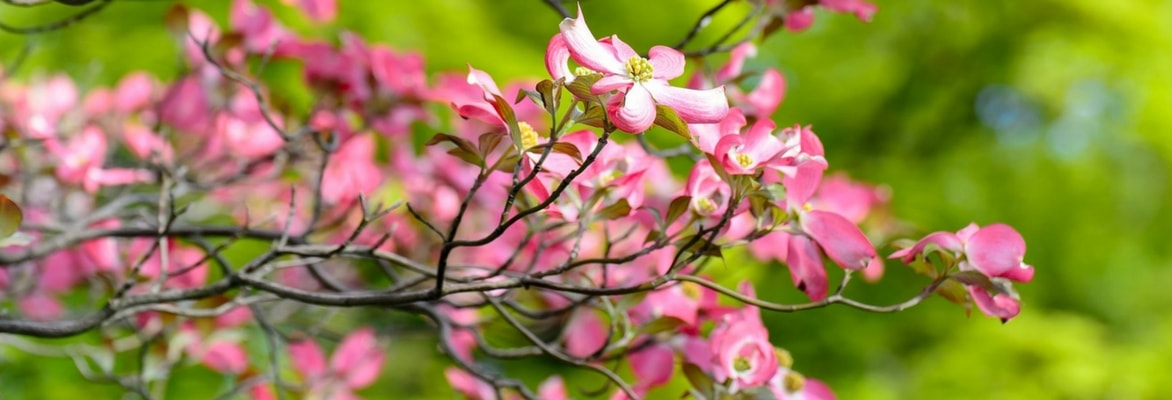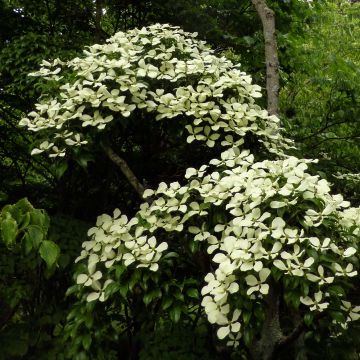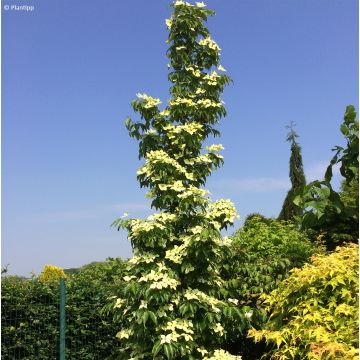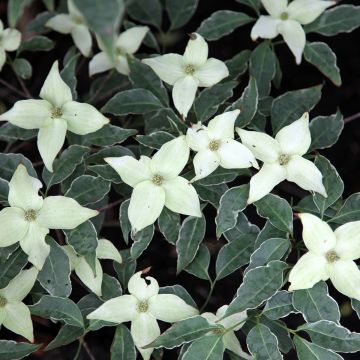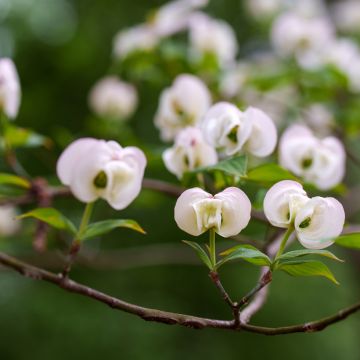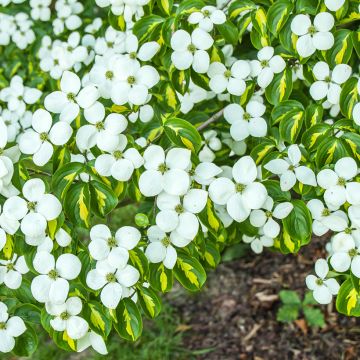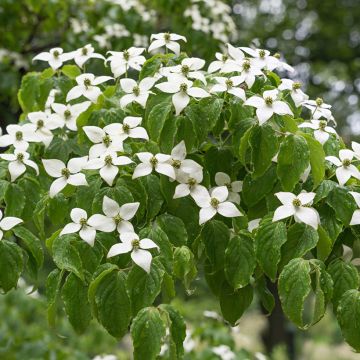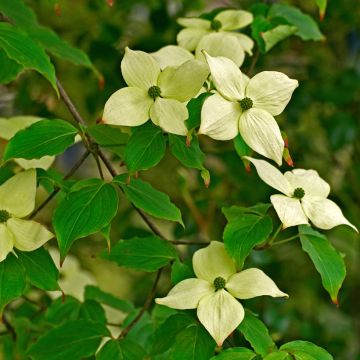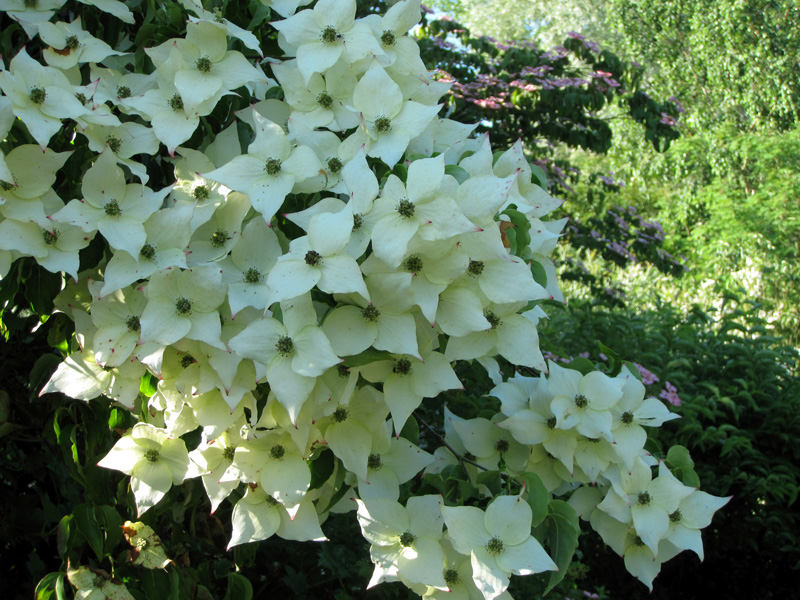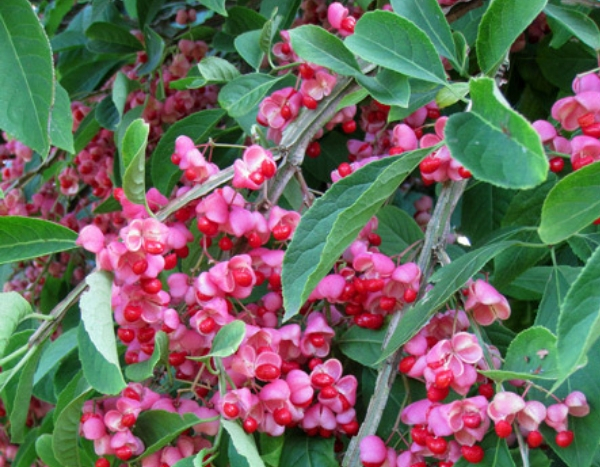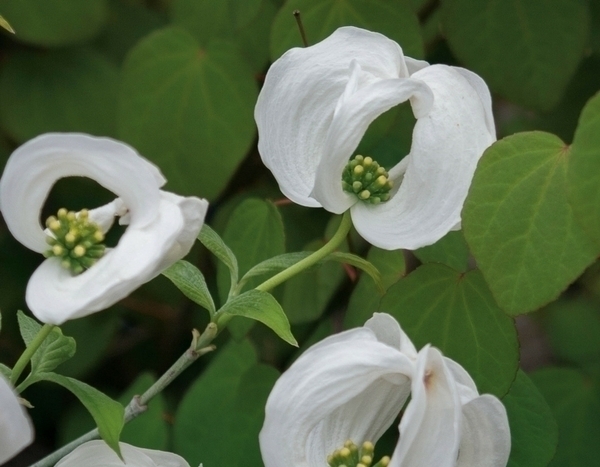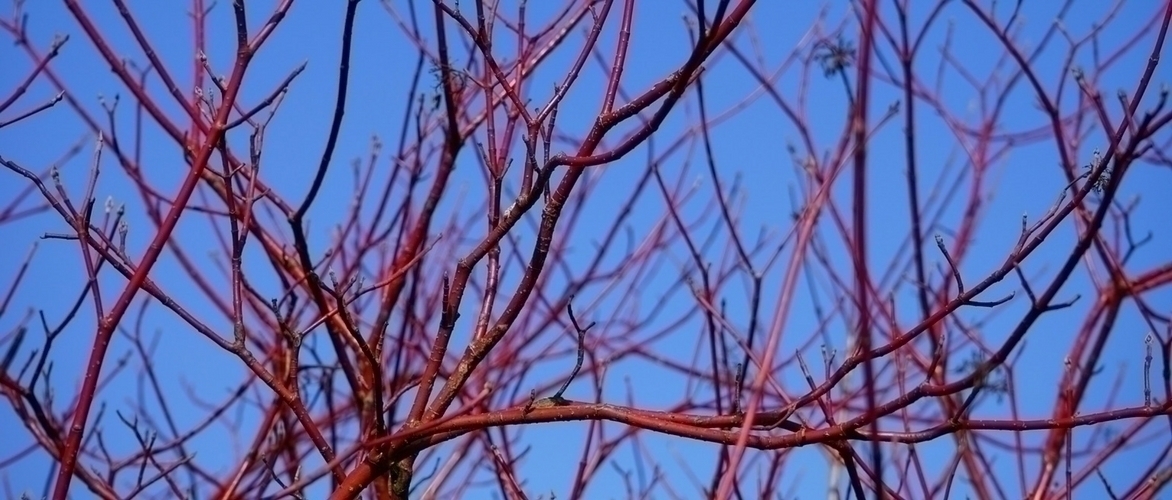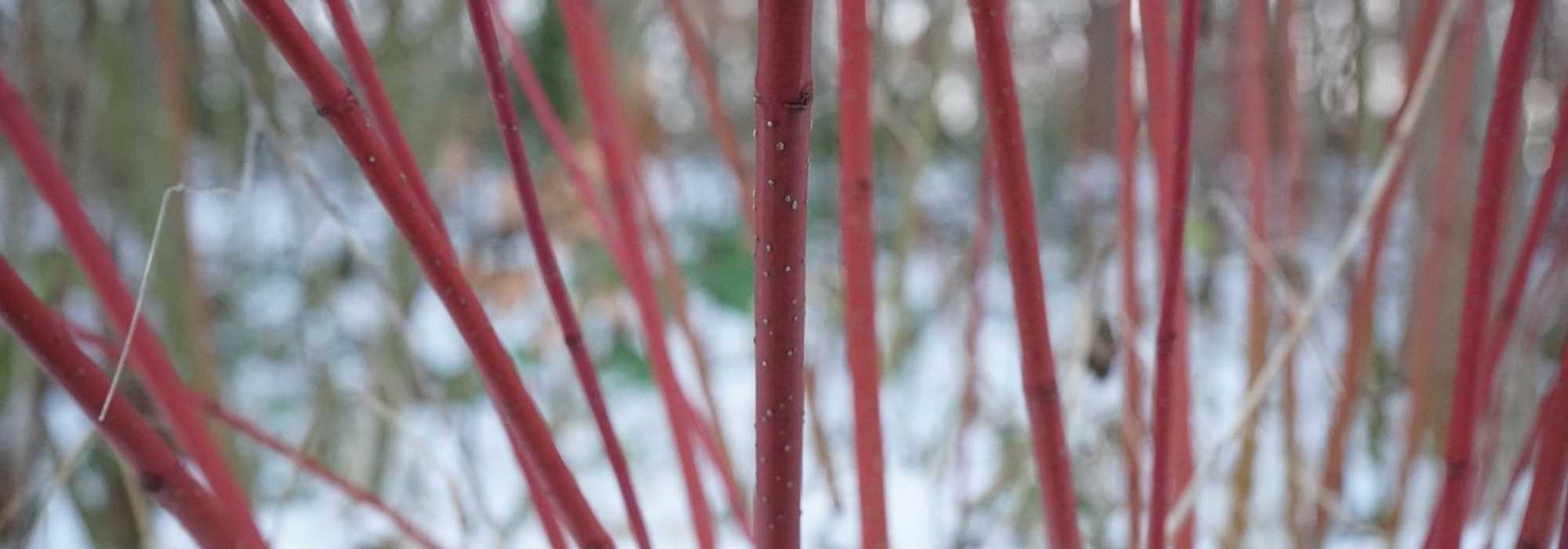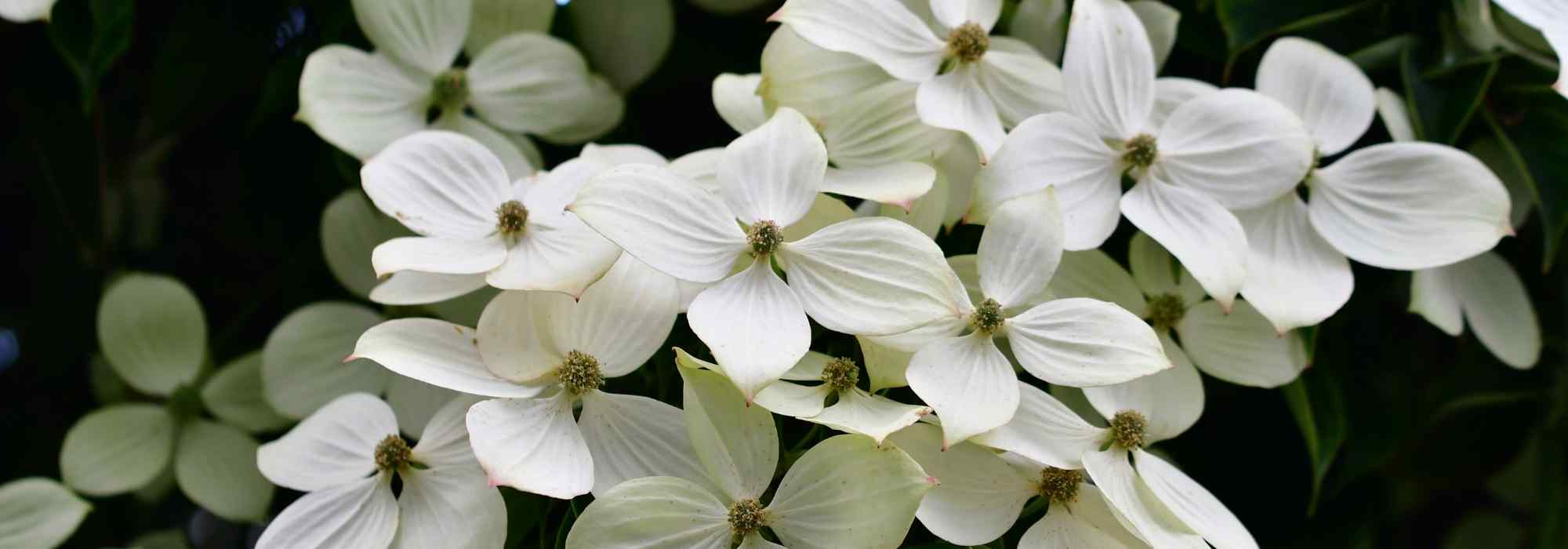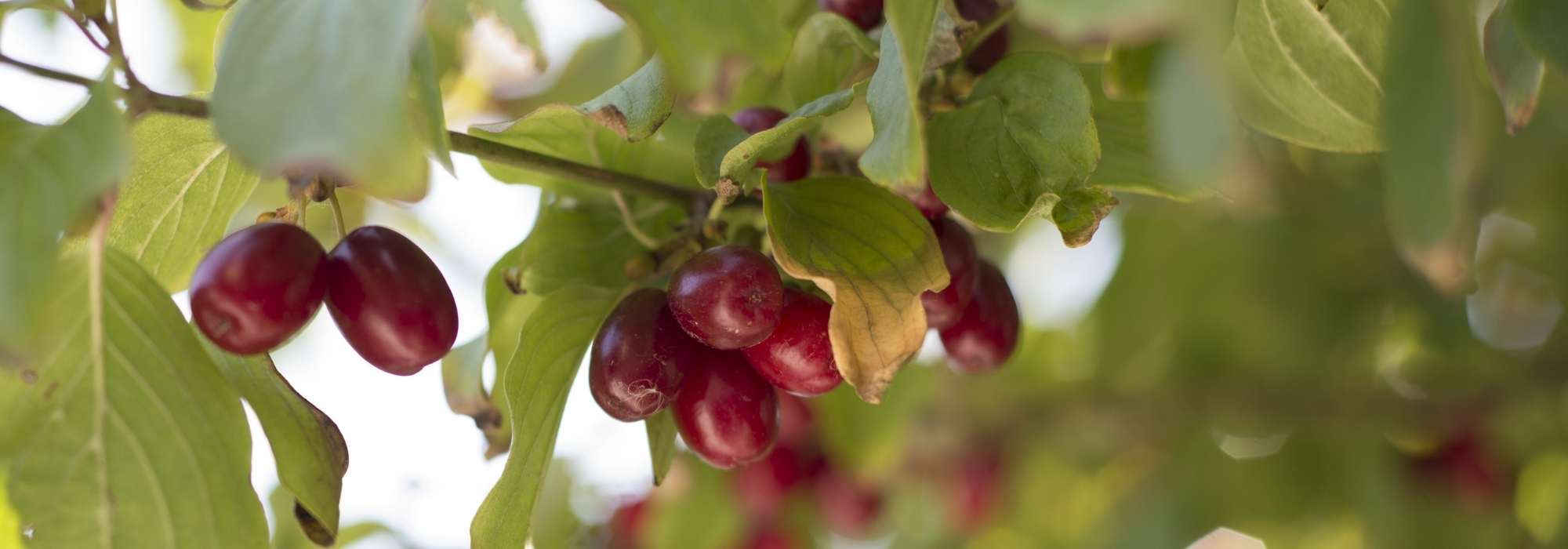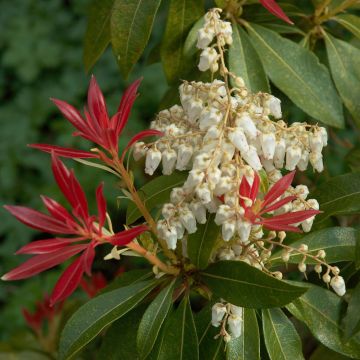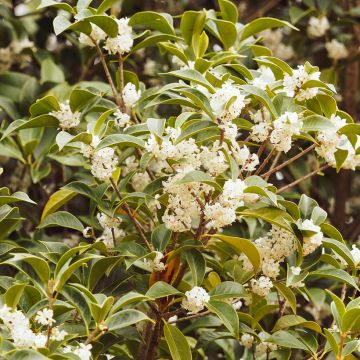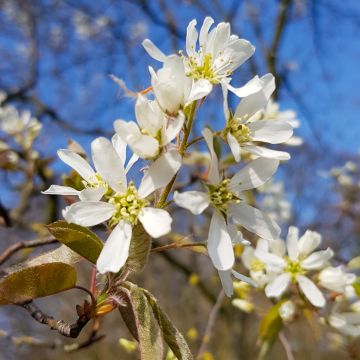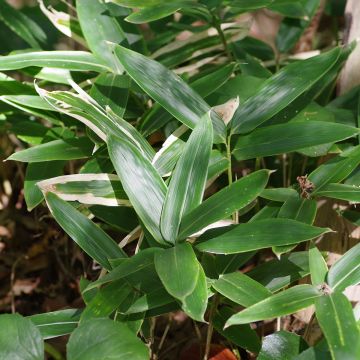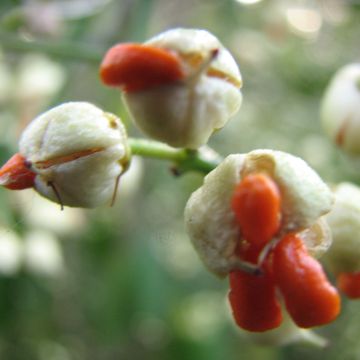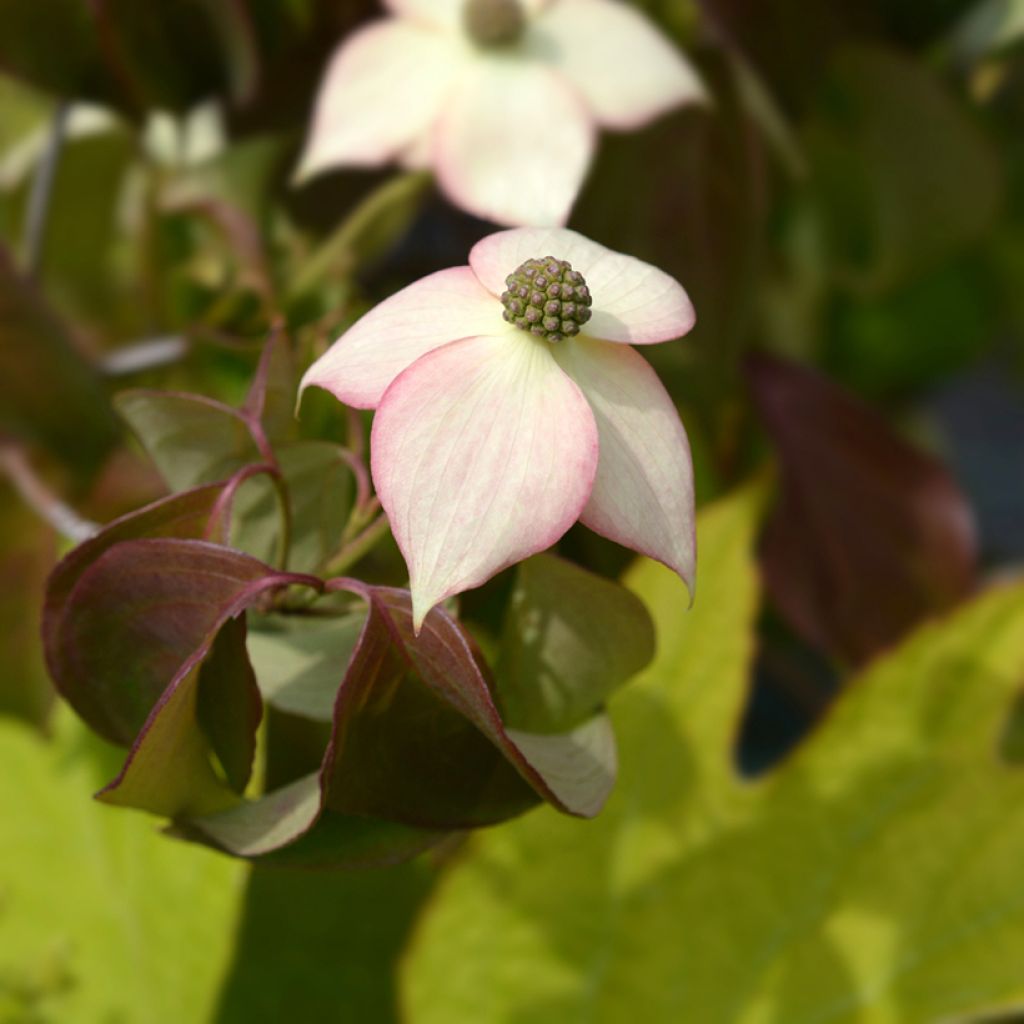

Cornus kousa Cappuccino - Flowering Dogwood
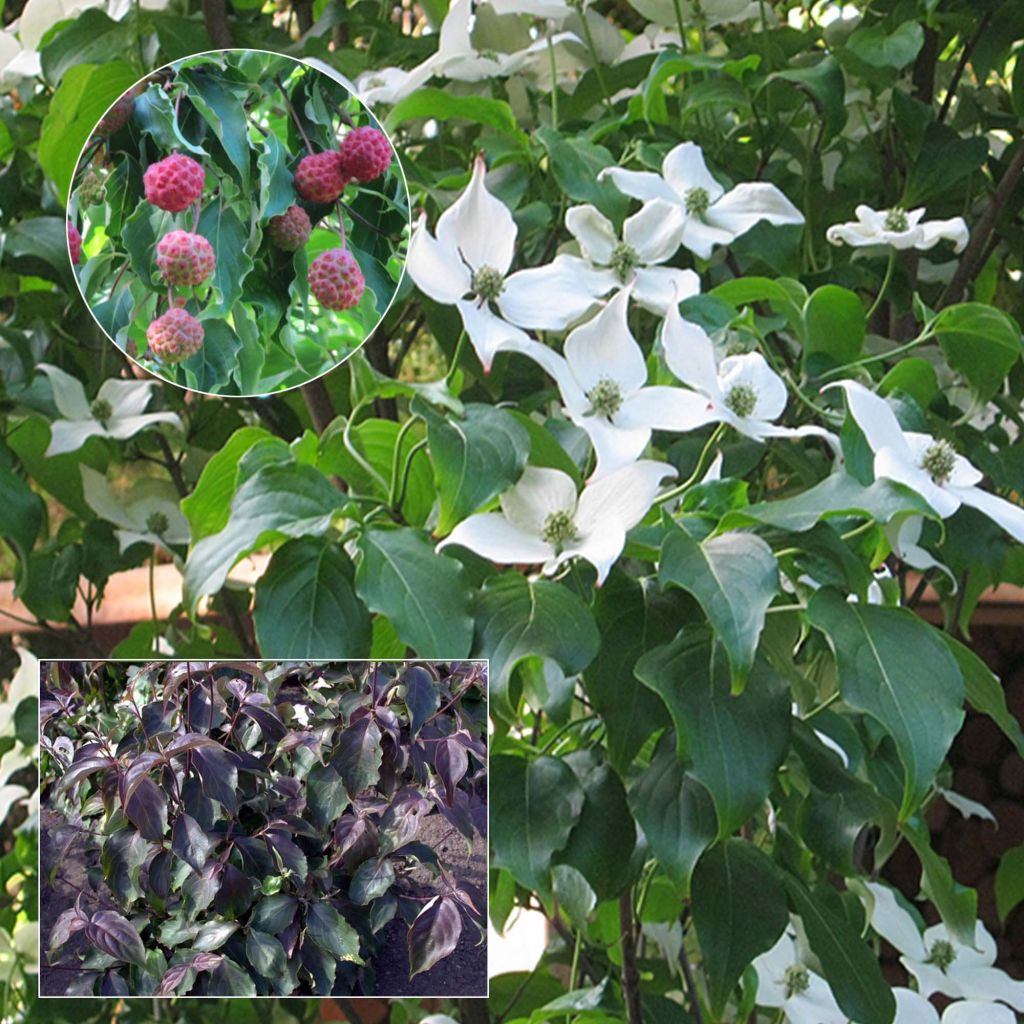

Cornus kousa Cappuccino - Flowering Dogwood


Cornus kousa Cappuccino - Flowering Dogwood
Cornus kousa Cappuccino - Flowering Dogwood
Cornus kousa Cappuccino®
Kousa Dogwood, Japanese Dogwood, Chinese Dogwood
The packaging box was not damaged, yet the bush was pruned by more than a third and another branch was broken... the disappointment is even greater considering the price of the product, which led to expect more careful handling.
Catherine , 26/09/2024
Special offer!
Receive a €20 voucher for any order over €90 (excluding delivery costs, credit notes, and plastic-free options)!
1- Add your favorite plants to your cart.
2- Once you have reached €90, confirm your order (you can even choose the delivery date!).
3- As soon as your order is shipped, you will receive an email containing your voucher code, valid for 3 months (90 days).
Your voucher is unique and can only be used once, for any order with a minimum value of €20, excluding delivery costs.
Can be combined with other current offers, non-divisible and non-refundable.
Home or relay delivery (depending on size and destination)
Schedule delivery date,
and select date in basket
This plant carries a 24 months recovery warranty
More information
We guarantee the quality of our plants for a full growing cycle, and will replace at our expense any plant that fails to recover under normal climatic and planting conditions.
Would this plant suit my garden?
Set up your Plantfit profile →
Description
Cornus kousa 'Cappuccino' is a new Dutch selection that stands out for the beauty of its foliage, which changes colour with the seasons and sunlight. This Japanese dogwood successively adorns itself with young reddish shoots and brown leaves that turn more or less dark green depending on sun exposure, and then turn sublime shades of bright red before falling in autumn. Its other assets are a lovely tiered habit, in a 'pagoda' shape, a beautiful white flowering in spring, and beautiful round carmine-fuchsia berries, which ripen during a long hot summer. Very hardy and less difficult to grow than its cousin Cornus florida, this very beautiful shrub undoubtedly deserves to be planted more. Give it a prominent place, preferably in partial shade, in a large shrub border.
Cornus kousa is a small tree or large shrub, native to Japan, China, and Korea. Its graphic silhouette, supported by layered and horizontal branches, gives it a very Japanese look. After many years of research and intense selection and hybridisation work, the 'Cappuccino' variety, introduced in 2010, has the most colourful foliage ever observed in this type of plant. This cultivar has a relatively slow growth, but can reach 4 to 6 m (13 ft 1 in to 19 ft 8 in) in height and 2 to 3 m (6 ft 6 in to 9 ft 10 in) in width after many years.
'Cappuccino' blooms in May-June, highlighted by leaves in shades of chocolate, purple-brown, and bronze-green. The shrub is adorned with numerous 'flowers', which are actually inflorescences, measuring approximately 12 to 13 cm (4.7 to 5.1 in) in diameter. These are clusters of small true flowers that are green and surrounded by four pointed bracts forming a star. Their colour is a barely pinkish-white on the edge, and they live and remain beautiful for several weeks after the pollination of the true flowers. They are arranged on the tree as if they were placed on the foliage. The flowers are followed by fruits measuring 2.5 cm (1 in) in diameter, red in colour, resembling strawberries. The higher the summer temperatures, the more abundant the fruiting. The fruits are edible and fleshy with a sweet flavour, and although of no real culinary interest they nevertheless enhance the charm of this large shrub at the end of the season. 'Capuccino' is also remarkable thanks to its young leaves tinged with purple. The leaves of Cornus kousa are ovate, strongly veined and slightly undulate on the edges. They measure between 5 and 8 cm (2 and 3.1 in) in length and are opposite to each other along the branches. They often take on beautiful colours in autumn before falling.
Cornus kousa 'Cappucino' thrives in continental climates, with marked summers and winters, but performs very well in milder areas. In hot regions, it must be protected from scorching sun. This Japanese dogwood is still rare in gardens yet very easy to grow once it has been carefully planted. It is a beautiful attraction on its own and deserves to be planted in isolation, standing out in the middle of a short grass meadow, for example. It will also be advantageous at the back of a border composed of camellias, Pieris, Rhododendrons, or shrubs with staggered flowering or evergreen foliage. Choose, for example, to combine it with oakleaf or paniculate hydrangeas, Japanese maples with purple foliage, a Fothergilla, or a Tetradium daniellii, the bee tree.
Cornus kousa Cappuccino - Flowering Dogwood in pictures
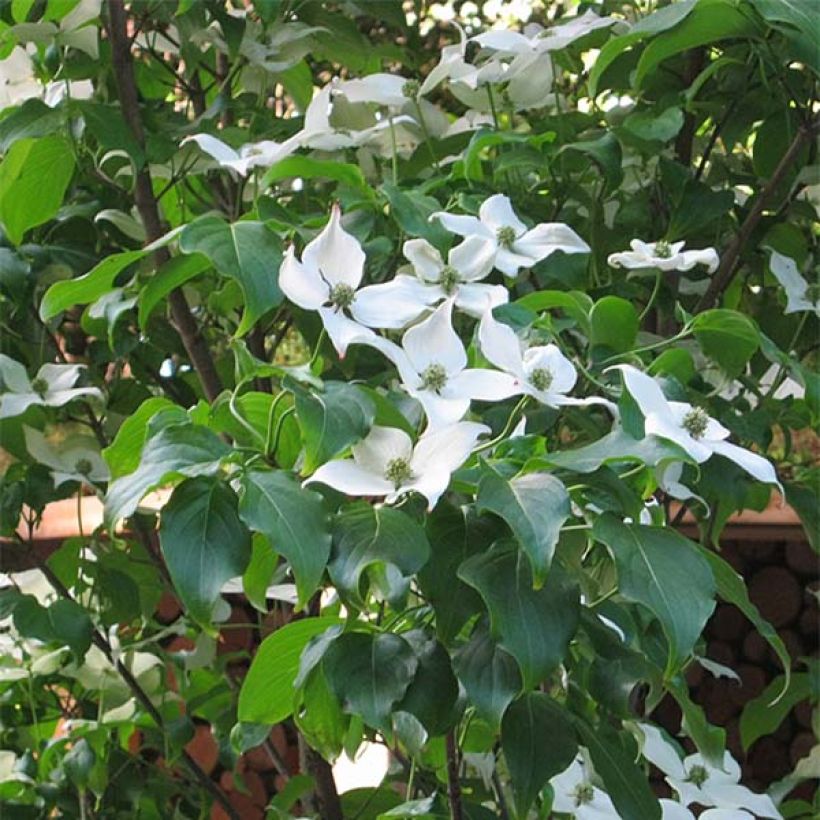

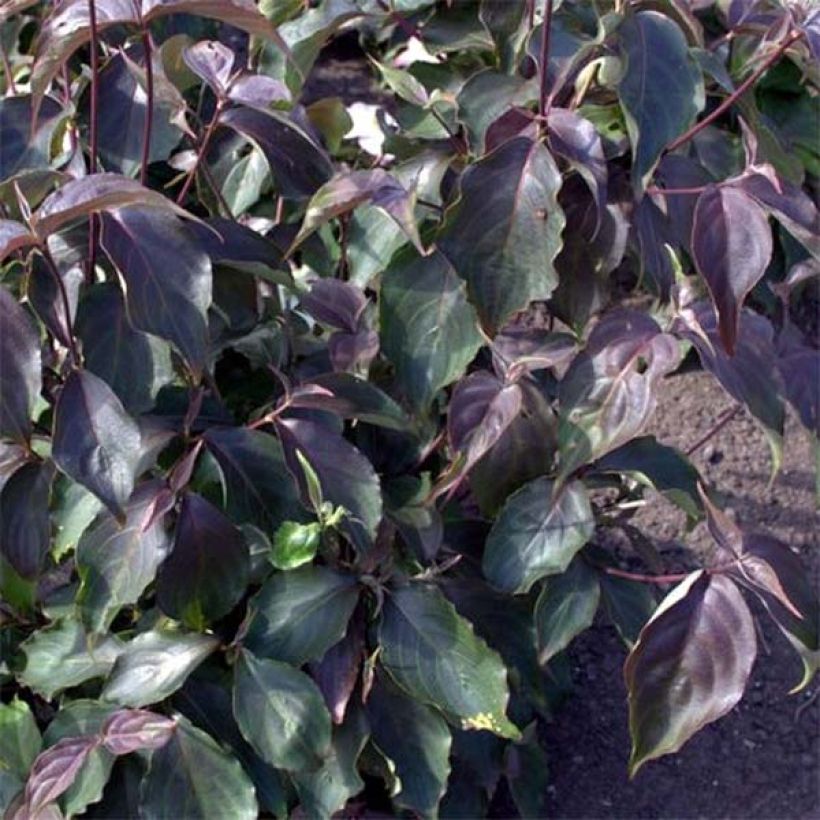

Plant habit
Flowering
Foliage
Botanical data
Cornus
kousa
Cappuccino®
Cornaceae
Kousa Dogwood, Japanese Dogwood, Chinese Dogwood
Cultivar or hybrid
Other Flowering Dogwood
View all →Planting and care
Originally from Japan, Korea, and China, Cornus kousa thrives in continental climates and temperate zones. Extremely cold temperatures during winter can cause absent or reduced flowering. Long, hot summers promote fruit ripening. However, this shrub is very hardy and can withstand frost of at least -15 °C (5 °F). It tolerates sunny exposures in areas with moderately warm summers. In hot regions, it should be planted in a sheltered spot away from scorching sun.
It appreciates deep, fertile, well-drained soils with a tendency towards acidity or neutrality, but it can tolerate some limestone in the soil (it is not a plant for heathland soil, which is too poor and dries out quickly). It greatly enjoys the thick humus of deciduous woodlands. It accepts clay soils as long as it is protected from excess humidity, especially in winter. Plant it in a deep hole lined with clay pellets, coarse sand, or gravel to ensure good drainage if necessary, in a very compact soil. Any good, balanced and supple garden soil is suitable for it. When planting, provide it with compost and leaf mould. Mulching with pine bark will help maintain freshness in summer and promote soil acidity.
Pruning is not obligatory but can be done at the end of winter to remove diseased or dead wood and crossing branches in order to maintain a nice habit. During the first two years after planting, watering should be regular in summer; afterwards the plant can manage on its own.
Planting period
Intended location
Care
Planting & care advice
-
, onOrder confirmed
Reply from on Promesse de fleurs
Similar products
Haven't found what you were looking for?
Hardiness is the lowest winter temperature a plant can endure without suffering serious damage or even dying. However, hardiness is affected by location (a sheltered area, such as a patio), protection (winter cover) and soil type (hardiness is improved by well-drained soil).

Photo Sharing Terms & Conditions
In order to encourage gardeners to interact and share their experiences, Promesse de fleurs offers various media enabling content to be uploaded onto its Site - in particular via the ‘Photo sharing’ module.
The User agrees to refrain from:
- Posting any content that is illegal, prejudicial, insulting, racist, inciteful to hatred, revisionist, contrary to public decency, that infringes on privacy or on the privacy rights of third parties, in particular the publicity rights of persons and goods, intellectual property rights, or the right to privacy.
- Submitting content on behalf of a third party;
- Impersonate the identity of a third party and/or publish any personal information about a third party;
In general, the User undertakes to refrain from any unethical behaviour.
All Content (in particular text, comments, files, images, photos, videos, creative works, etc.), which may be subject to property or intellectual property rights, image or other private rights, shall remain the property of the User, subject to the limited rights granted by the terms of the licence granted by Promesse de fleurs as stated below. Users are at liberty to publish or not to publish such Content on the Site, notably via the ‘Photo Sharing’ facility, and accept that this Content shall be made public and freely accessible, notably on the Internet.
Users further acknowledge, undertake to have ,and guarantee that they hold all necessary rights and permissions to publish such material on the Site, in particular with regard to the legislation in force pertaining to any privacy, property, intellectual property, image, or contractual rights, or rights of any other nature. By publishing such Content on the Site, Users acknowledge accepting full liability as publishers of the Content within the meaning of the law, and grant Promesse de fleurs, free of charge, an inclusive, worldwide licence for the said Content for the entire duration of its publication, including all reproduction, representation, up/downloading, displaying, performing, transmission, and storage rights.
Users also grant permission for their name to be linked to the Content and accept that this link may not always be made available.
By engaging in posting material, Users consent to their Content becoming automatically accessible on the Internet, in particular on other sites and/or blogs and/or web pages of the Promesse de fleurs site, including in particular social pages and the Promesse de fleurs catalogue.
Users may secure the removal of entrusted content free of charge by issuing a simple request via our contact form.
The flowering period indicated on our website applies to countries and regions located in USDA zone 8 (France, the United Kingdom, Ireland, the Netherlands, etc.)
It will vary according to where you live:
- In zones 9 to 10 (Italy, Spain, Greece, etc.), flowering will occur about 2 to 4 weeks earlier.
- In zones 6 to 7 (Germany, Poland, Slovenia, and lower mountainous regions), flowering will be delayed by 2 to 3 weeks.
- In zone 5 (Central Europe, Scandinavia), blooming will be delayed by 3 to 5 weeks.
In temperate climates, pruning of spring-flowering shrubs (forsythia, spireas, etc.) should be done just after flowering.
Pruning of summer-flowering shrubs (Indian Lilac, Perovskia, etc.) can be done in winter or spring.
In cold regions as well as with frost-sensitive plants, avoid pruning too early when severe frosts may still occur.
The planting period indicated on our website applies to countries and regions located in USDA zone 8 (France, United Kingdom, Ireland, Netherlands).
It will vary according to where you live:
- In Mediterranean zones (Marseille, Madrid, Milan, etc.), autumn and winter are the best planting periods.
- In continental zones (Strasbourg, Munich, Vienna, etc.), delay planting by 2 to 3 weeks in spring and bring it forward by 2 to 4 weeks in autumn.
- In mountainous regions (the Alps, Pyrenees, Carpathians, etc.), it is best to plant in late spring (May-June) or late summer (August-September).
The harvesting period indicated on our website applies to countries and regions in USDA zone 8 (France, England, Ireland, the Netherlands).
In colder areas (Scandinavia, Poland, Austria...) fruit and vegetable harvests are likely to be delayed by 3-4 weeks.
In warmer areas (Italy, Spain, Greece, etc.), harvesting will probably take place earlier, depending on weather conditions.
The sowing periods indicated on our website apply to countries and regions within USDA Zone 8 (France, UK, Ireland, Netherlands).
In colder areas (Scandinavia, Poland, Austria...), delay any outdoor sowing by 3-4 weeks, or sow under glass.
In warmer climes (Italy, Spain, Greece, etc.), bring outdoor sowing forward by a few weeks.






























